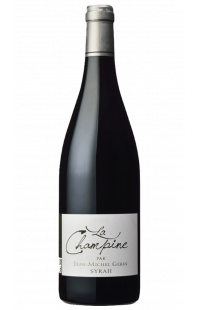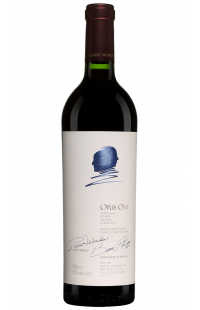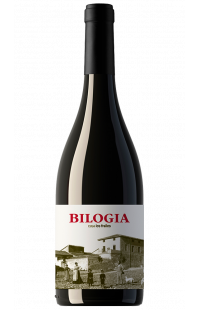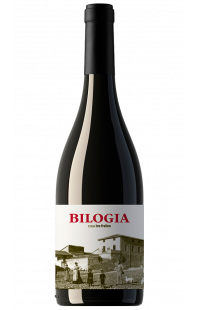- Menu
- All our wines
- Bordeaux
-
Rhône
-
Burgundy
-
Rosés Wines
-
Champagne
- France
-
World
- PRIMEURS
- ORGANIC WINES
Andalousie
There are 2 products.
The Wines of Andalusia: History, Characteristics, and Renewal of a Millennia-Old Tradition
Andalusia, a land of sun and culture, is also a viticultural cradle with deep roots. With a wine history that goes back more than three thousand years, this region in southern Spain has managed to preserve and enrich a winemaking tradition unique in the world. From fortified wines to contemporary reds, Andalusian wines are today synonymous with quality, diversity, and expertise. This article takes you on a journey to discover these Andalusian nectars, from their millennia-old history to their modern renaissance.
The History of Andalusian Wines: From the Phoenicians to Today
Phoenician Origins and Ancient Heritage
Viticulture in Andalusia was introduced by the Phoenicians more than three thousand years ago. This people of maritime traders, originating from present-day Lebanon, brought the vine to the Andalusian coasts around 1100 BC. The Phoenicians not only implanted vine cultivation but also initiated the natives into winemaking techniques, thus laying the foundations of a tradition that still endures today.
The Muslim Era and Viticultural Resistance
With the Muslim invasion of Spain in the 8th century, wine production suffered a setback due to Islamic precepts forbidding alcohol. However, viticulture never completely disappeared. Vineyards continued to be cultivated, often to produce raisins or wine destined for export to neighboring Christian lands. This resilience allowed vine culture to survive despite the religious and cultural constraints of the time.
Viticultural Renaissance after the Reconquista
After the Christian Reconquest of Spain in the 13th century, Andalusian viticulture experienced a true renaissance. British merchants, fond of Andalusian wines for their resistance to long sea voyages, played a key role in spreading the wines of Jerez and other appellations beyond Spanish borders. It was at this time that the process of fortification developed, which consists of adding alcohol to wine to stabilize it and enhance its flavors.
The Great Andalusian Appellations: Jerez, Montilla-Moriles, and More
Jerez: The Art of Sherry
Jerez de la Frontera is undoubtedly the most famous wine region of Andalusia, world-renowned for its fortified wines, sherry. This wine is produced mainly from the Palomino grape variety, cultivated on limestone soils called albariza. Sherry is distinguished by its different variants, ranging from the dry Fino to the sweet Pedro Ximénez, passing through Amontillado and Oloroso. The unique aging process of sherry, using the criadera and solera systems, allows for the creation of wines of remarkable complexity and depth.
Montilla-Moriles: The Best-Kept Secret
North of Jerez lies the region of Montilla-Moriles, which shares with its neighbor the expertise of fortified wines, although often in the shadow of Jerez. The main grape variety here is Pedro Ximénez, used to produce sweet and syrupy wines, but also dry and oxidative wines. The warmer climate of Montilla-Moriles allows for the harvest of extremely ripe grapes, resulting in wines rich in aromas and flavors.
Manzanilla de Sanlúcar: The Coastal Wine
Sanlúcar de Barrameda, located on the Atlantic coast, is famous for Manzanilla, a light and saline type of sherry. This wine is aged under a layer of yeast called flor, in storage conditions influenced by sea breezes. The result is a dry, delicate, and refreshing wine, ideal to accompany seafood.
New Appellations and Diversification
Besides traditional regions, Andalusia is seeing the emergence of new wine zones producing high-quality red and white wines. Regions like Sierra de Málaga and Sierras de Cádiz have specialized in the production of still wines, often from international grape varieties such as Cabernet Sauvignon, Syrah, and Chardonnay. These wines are the result of modern viticulture, combining tradition and innovation to meet the growing international demand for Andalusian wines.
The Unique Factors of Andalusian Wines
Climate: A Mediterranean Amphitheater
Andalusia benefits from a Mediterranean climate, characterized by hot and dry summers and mild winters. The average annual temperature, around 16°C (61°F), combined with exceptional sunshine, creates ideal conditions for vine cultivation. Maritime influences, especially in coastal regions, bring a welcome freshness that balances the intense heat of the inland areas.
Soils: The Richness of Albariza and More
Andalusian soils are varied, but the albariza soils, rich in limestone, are the most emblematic. These white and chalky soils retain moisture even during the driest months, which is essential for the optimal ripening of grapes. Other soil types, such as clay soils and the sandy soils of the coasts, also contribute to the diversity of wine styles produced in Andalusia.
Grape Varieties: Tradition and Diversity
Andalusia is the realm of the Palomino grape, but other varieties also thrive here. Pedro Ximénez, renowned for its sweet and concentrated wines, is another key grape. Moscatel, used to produce sweet and aromatic wines, is also cultivated in certain regions. These indigenous grape varieties coexist today with international varieties, allowing Andalusian producers to explore new horizons while respecting their viticultural heritage.
The Aging Process: The Excellence of the Criadera and Solera Systems
The aging of Andalusian wines, notably for sherries, is unique in the world. The criadera and solera system allows for blending wines of different years to create a final product of extraordinary consistency and complexity. This process, which can last decades, ensures that each bottle of sherry is the result of patiently acquired know-how transmitted from generation to generation.
The Recent Evolution of Andalusian Wines: Between Tradition and Modernity
The Revival of Dry Red and White Wines
While Andalusia is historically known for its fortified wines, the region has recently seen a renewed interest in dry red and white wines. Innovative bodegas are now exploiting the unique characteristics of the Andalusian terroir to produce still wines that rival in quality with the best international productions. These wines, often made from imported grape varieties, reflect a new facet of Andalusian viticulture, oriented towards the future while respecting traditions.
Wine Tourism in Andalusia: An Unforgettable Experience
Andalusia is attracting more and more visitors, not only for its landscapes and cultural heritage but also for its wines. Wine tourism is booming, with well-established wine routes allowing enthusiasts to discover bodegas, taste wines, and understand production processes directly on-site. Cities like Jerez, Sanlúcar de Barrameda, and Montilla have become must-visit destinations for wine lovers worldwide.
International Recognition and Distinctions
In recent years, Andalusian wines have gained recognition on the international scene, winning prestigious awards and attracting the attention of wine critics. This recognition is the result of consistent quality, innovation respectful of tradition, and a strong commitment from winemakers to promote the excellence of their products. Today, Andalusian wines are not only appreciated in Spain but also around the world.
The Main Wines of Andalusia: An Overview of Varieties and Styles
Fino: Freshness and Subtlety
Fino is a dry, light, and delicate sherry, often consumed as an aperitif. Its aging under flor gives it subtle aromas of almond and yeast, with a dry and refreshing finish. It's an ideal wine to accompany tapas, seafood, and light dishes.
Amontillado: Complexity and Richness
Amontillado starts its life as a Fino but, after some time, undergoes controlled oxidation that brings more complex aromas of hazelnut, caramel, and spices. It's a rich and deep wine, perfect for white meat dishes, hearty soups, or aged cheeses.
Oloroso: Power and Structure
Oloroso is a dry sherry, but unlike Fino and Amontillado, it's not aged under flor, which gives it a darker color and intense aromas of nuts, leather, and chocolate. It's a powerful wine, often associated with rich dishes like game, stews, or spicy foods.
Pedro Ximénez: Sweetness and Intensity
Pedro Ximénez, often abbreviated as PX, is a sweet wine of incomparable richness, produced from sun-dried grapes. Its aromas of fig, date, and chocolate make it an excellent dessert wine, which pairs wonderfully with chocolate desserts, ice creams, or simply enjoyed on its own.
Red Wines from Cádiz and Málaga: Modernity and Balance
Andalusian red wines, although less known than sherries, are on the rise. Produced mainly in the Sierras de Cádiz and Málaga, these wines are often made from grape varieties such as Syrah, Cabernet Sauvignon, and Tempranillo. These warm and balanced wines reflect the modernity of Andalusian viticulture, combining power and elegance.
Bodegas and Wine Routes: Traveling Through Andalusian Terroirs
Visiting the Bodegas of Jerez: A Journey to the Heart of Sherry
The bodegas of Jerez offer a unique dive into the world of sherry. These often centuries-old establishments open their doors to visitors for tastings and guided tours that reveal the secrets of aging and production of these unique wines. Houses like González Byass, Lustau, and Tío Pepe are essential stops for any wine enthusiast.
Exploring the Vineyards of Montilla-Moriles: A Hidden Gem
Montilla-Moriles, although less touristic than Jerez, offers an equally enriching experience. The bodegas of this region highlight authentic wines, often produced in an artisanal manner. Visitors can discover exceptional wines like Pedro Ximénez and learn more about traditional winemaking techniques.
Wine Routes: From Cádiz to Málaga
Andalusia offers several wine routes, each providing a different experience. The wine route of Sierra de Cádiz takes visitors through spectacular landscapes, with stops in bodegas producing characterful red and white wines. The Málaga wine route allows the discovery of sweet wines and powerful reds from this coastal region.
FAQ
What makes Andalusian wines unique? Andalusian wines are distinguished by their unique aging process, notably the criadera and solera systems, as well as indigenous grape varieties like Palomino and Pedro Ximénez. The Mediterranean climate and limestone soils also play a key role in the quality of the wines.
What are the main grape varieties used in Andalusia? The main grape varieties used in Andalusia are Palomino, Pedro Ximénez, and Moscatel. These varieties are the basis of the famous sherries, but the region also produces wines from international varieties like Syrah, Cabernet Sauvignon, and Chardonnay.
What is the best time to visit Andalusian vineyards? The best time to visit Andalusian vineyards is in spring or autumn when temperatures are mild, and the landscapes are particularly beautiful. It's also the harvest season, an ideal time to discover winemaking processes.
How does the aging process of Jerez wines work? The aging process of Jerez wines is mainly done according to the criadera and solera systems, where wines from different years are blended to ensure consistent quality. This system allows for the development of the complexity of sherry's aromas and flavors.
What culinary specialties pair with Andalusian wines? Andalusian wines, especially sherries, pair well with a variety of dishes. Fino and Manzanilla are perfect with tapas and seafood, Amontillado pairs well with white meats and soups, while Oloroso and Pedro Ximénez go with rich dishes and desserts.
Are Andalusian wines exported internationally? Yes, Andalusian wines, notably sherries, are widely exported and appreciated worldwide. The quality of these wines has earned them international recognition, and they are often present on the wine lists of the best restaurants across the globe.
Conclusion
Andalusian wines represent an exceptional cultural and gustatory richness, combining tradition and innovation. From the millennia-old history of Andalusian viticulture to unique aging techniques, each bottle tells a story of passion, expertise, and terroir. Whether you're a lover of sweet wines or powerful reds, Andalusia offers a diversity of wines that will delight all palates. By visiting this region, you will discover not only exceptional wines but also a living heritage that continues to flourish and fascinate enthusiasts around the world.









